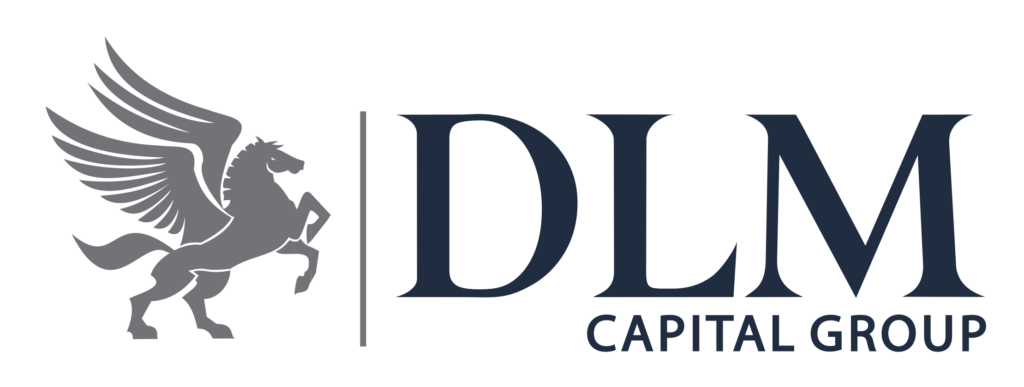Introduction to Corporate Bonds
Many investors only buy bonds on a whim due to the seeming complexity of the bond market and its language. In truth, bonds are fairly basic debt instruments. So how can you break into this market? Learn these fundamental bond market phrases to get started in bond investing.
Corporate bonds are a popular investment choice that frequently plays an important part in well-diversified portfolios. These corporate-issued fixed-income instruments allow investors to generate monthly interest payments while conserving their cash. However, understanding the complexities of corporate bonds, like with any investment, is critical for making educated selections. In this in-depth tutorial, we’ll look at what corporate bonds are, their features, the dangers and rewards of investing in them, and key considerations for investors new to the corporate bond market.
When investors acquire a bond, they are basically lending money to the issuing firm. The bond is a pledge to repay its face value (the amount borrowed) plus an extra preset interest rate over a certain period of time. As a result, the bond might be referred to as an IOU.
Understanding Corporate Bonds
What exactly are corporate bonds?
Corporate bonds are debt securities that firms issue in order to raise capital. When a corporate bond is purchased, the investor is effectively lending money to the issuing firm in exchange for periodic interest payments and the return of the principal amount at maturity. The annual interest income provided to bondholders is often determined by set interest rates, known as coupon rates.
Corporations issue corporate bonds. Issuing bonds is another option for businesses to raise funds without diluting ownership through fresh stock issuance or borrowing from a traditional lender. Bonds can be either publicly traded or privately held.
Companies may use the proceeds from bond sales for a variety of purposes, including the purchase of new assets or facilities, investment in research and development (R&D), refinancing, supporting mergers and acquisitions (M&A), and even stock buybacks.
How do corporate bonds work?
A corporate bond is a loan made to a firm for a set length of time with a set interest rate. In exchange, the corporation commits to pay interest (usually twice a year) and then repay the bond’s face value when it matures.
As an example, consider a conventional fixed-rate bond. If you put $1,000 in a 10-year bond earning 3% fixed interest, the corporation will pay you $30 every year for a decade and return your $1,000. While fixed-rate bonds are the most prevalent, there are additional options to consider:
Floating-rate bonds feature variable interest rates that fluctuate in response to benchmarks, such as the US Treasury rate. These are often issued by corporations deemed to be below investment grade, i.e., trash bonds. Bonds with no interest payments are known as zero-coupon bonds. Instead, you pay less than the face value (the amount the issuer commits to repay) and receive the entire value when the bond matures. Convertible bonds allow firms to pay investors in common stock rather than cash when a bond matures.
Characteristics of Bonds
Coupon Rate: The set interest rate paid to bondholders, commonly represented as a percentage of the bond’s face value.
Maturity day: the day when the bond achieves its full face value and the issuer is compelled to repay the principal amount to bondholders.
Face value, or par value, is the nominal value of the bond, which is the amount payable to the bondholder at maturity.
Credit rating: a measure of an issuer’s creditworthiness issued by credit rating organizations. Larger-rated bonds are deemed less risky, but lower-rated bonds may give larger returns but are more risky.
Yield to Maturity (YTM): The overall return on a bond if held to maturity, taking into account both interest income and any capital gains or losses.
Callable or Puttable Bonds: Bonds with callable or puttable features allow the issuer or bondholder to redeem or sell the bonds before maturity.
Corporate bonds may be highly dependable and profitable sources of income. But before you put your money down, it’s crucial to understand the fundamentals of your investments, from how they’re rated to pricing and interest rates.
Interest Rates and Bond Prices
Many newspapers and periodicals, including Barron’s, Investor’s Business Daily, and The Wall Street Journal, publish bond prices. Bond prices are for recent trading, generally from the previous day. However, keep in mind that prices vary and market circumstances might change suddenly.
When bond prices fall, the interest rate rises. This is because the bond is less expensive, yet the interest rate stays the same as when it was first offered. In contrast, as the price of a bond rises, the effective yield falls.
Because of their volatile performance, term bonds often have higher interest rates. A company’s financial health and profitability may vary over time and may no longer be the same as when its bonds were initially issued. Bonds with longer maturities pay a higher interest rate to compensate for this risk.
A callable or redeemable bond is one that the issuing corporation can redeem before the maturity date. Because these bonds can be called at any time, you risk losing the interest left on them. However, the firm will give you and other investors a cash premium.
Risks and Rewards of Investing in Corporate Bonds
Rewards of corporate bonds
Regular Income: Corporate bonds provide a consistent source of interest income, making them an appealing alternative for income-oriented investors, particularly those nearing retirement.
Diversification: Including corporate bonds in a portfolio can help to diversify it by balancing the risk and return profile by adding an asset class that may not move in lockstep with equities.
Potential for Capital Appreciation: If interest rates fall or the issuer’s creditworthiness improves, the market value of existing bonds may rise, providing investors with capital appreciation.
Risks of corporate bonds:
Bond Price Risk: Bond prices and interest rates are inversely related. When interest rates rise, bond prices tend to decline, potentially resulting in capital losses for bondholders.
Credit Risk: the risk that the issuer may fail to make interest payments or repay the principal at maturity. Larger-yielding bonds sometimes have a higher credit risk.
Market Risk: Changes in the general bond market might have an influence on corporate bond pricing. Market sentiment may be influenced by economic conditions, inflation, and geopolitical events.
Liquidity Risk: Some corporate bonds may have poor liquidity, making it difficult to sell them in the secondary market without affecting the bond’s price.
The Basics of Bonds
Bonds are a type of debt.
In a nutshell, bonds are debt. Individuals frequently incur debt from banks when they borrow money (in the form of a loan) to pay for a home, automobile, higher education, and so on.
Consider the role of bonds in reverse. Individuals, known as investors, give money to enterprises and governments in need. In this situation, companies and governments are referred to as borrowers.
Bonds pay interest.
Investors get paid interest on bonds in return for lending money, similar to how loan providers or credit card issuers charge us interest when they lend us money. Bonds are typically referred to as “fixed income investments” since they pay investors interest at regular intervals and can assist in balancing any losses you may incur if you also invest in equities.
A coupon payment is the yearly interest rate that bonds pay to investors between the day the bond is issued and the date it matures. It is typically paid out twice a year to investors.
Bonds bind your money until the maturity date. This is in contrast to stocks, which you may purchase and sell at any moment. As a result, a 10-year bond must be left unchanged for ten years. Before you hand over your money, you should know when a bond will mature.
Bonds are assigned a rating.
Similar to how people have a credit score that shows lenders their creditworthiness and the possibility of repaying their loan, certain types of bonds have credit ratings that indicate to investors the likelihood of being reimbursed for their investments.
According to the S&P rating methodology, the highest bond rating is AAA. Furthermore, any bond with a grade of C or worse is regarded to having a higher risk of default, which means investors may lose their investment.
When purchasing a bond, you should also consider interest rates and the rate of inflation. Rising inflation and rising interest rates are two major threats to bonds, the latter of which can cause bond prices to decline. Both can result in bonds losing value.
Types of Bonds
Bonds issued by corporations
Corporate bonds are debt instruments issued by businesses to cover expenditures and raise money. The yield on these bonds is determined by the creditworthiness of the corporation issuing them. The riskiest bonds are referred to as “junk bonds,” yet they also provide the biggest yields. Corporate bond interest is taxed at both the federal and state levels.
Government Bonds
Sovereign bonds, often known as sovereign debt, are financial instruments issued by national governments to fund their operations. These bonds often have a very high credit rating and a very modest yield since the issuing governments are quite unlikely to default.
Bonds issued by municipalities
Municipal bonds, sometimes known as munis, are bonds issued by municipalities. Contrary to what the name implies, this can relate to both state and county debt as well as municipal debt. Municipal bond income is exempt from most taxes, making it an appealing investment for those with higher tax rates.
How to Select Corporate Bonds for a Portfolio
Let us begin with credit ratings. Bond rating firms include S&P Global (SPGI 1.62%), Moody’s (MCO 1.38%), and Fitch.
In general, the lower the credit rating, the greater the interest rate that a corporation must provide to compensate for the increased risk. Junk bonds are corporate bonds with ratings lower than BBB- from S&P and Fitch and Baa3 from Moody’s. Most investors should avoid trash bonds because they have a significantly higher chance of irreversible loss than investment-grade corporate bonds.
A bond’s interest rate is often a result of its duration, in addition to its credit rating. The longer the duration, the greater the interest rate. For instance:
But don’t only buy bonds with the best returns depending on your time horizon; also diversify for risk concerns. For example, buying only bonds from firms in the same industry or being exposed to the same risks may result in a riskier bond portfolio than you realize. So, consider each bond acquisition and how it will fit into your portfolio.
How to Buy Corporate Bonds
1. Bond Funds vs. Individual Bonds
Individual corporate bonds, or bond funds, can be purchased by investors. Bond funds offer diversification but may not give the same level of control over individual securities as mutual funds.
2. Primary Market vs. Secondary Market
Investors have the option of purchasing newly issued corporate bonds in the main market or existing bonds in the secondary market. New issuances are frequently acquired through underwriters, but the secondary market includes investors purchasing and selling bonds.
3. Investment Accounts
To purchase and sell corporate bonds, investors normally require a brokerage account. Online brokerages enable investors to access a diverse choice of bonds and make deals.
4. Bond Ladders
Bond laddering methods, which entail acquiring bonds with staggered maturities, are used by certain investors. This strategy can provide a steady revenue stream while mitigating interest rate risk.
Conclusion of Corporate Bonds
Investing in corporate bonds may be a vital component of a well-diversified portfolio, providing a mix of income-generating and capital preservation. However, it is critical for investors to undertake rigorous research, determine their risk tolerance, and keep updated about economic circumstances and interest rate changes. Investors may make educated selections that match their financial goals if they understand the risks and rewards connected with corporate bonds and consider crucial elements in the investment process. Whether you are a seasoned investor or new to the bond market, a deliberate approach to corporate bond investing may contribute to a healthy and balanced investment plan.





